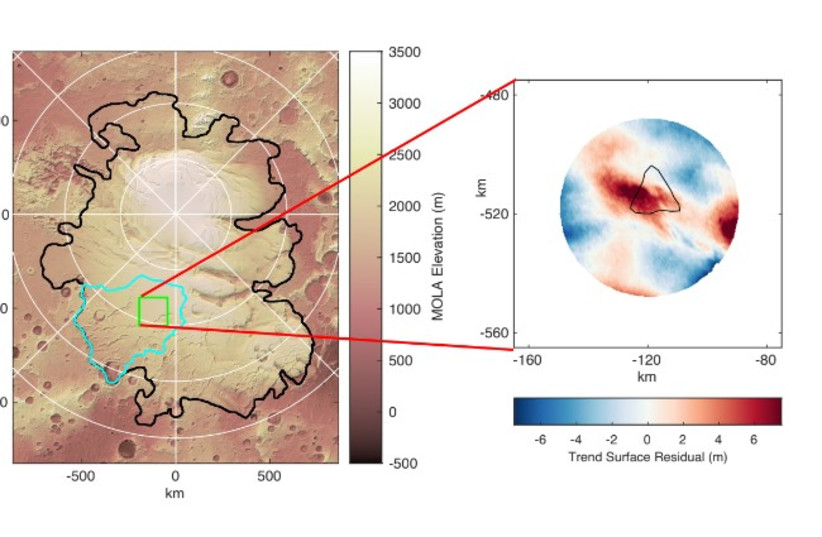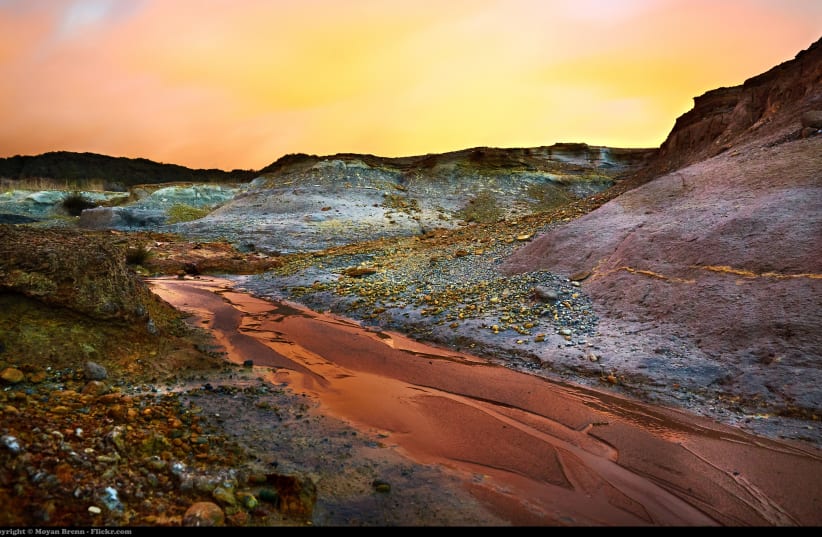Liquid water has been found on Mars, according to a study published earlier in the day on Thursday in the peer-reviewed journal Nature Astronomy.
Mars, like Earth, has thick water ice caps at both poles. However, while there is water beneath Earth’s ice caps, the ones on Mars have long been thought to be solid through and through.
An international team of researchers led by the University of Cambridge now reports the first independent line of evidence showing the presence of liquid water beneath Mars’ south polar ice cap,
The team identified subtle patterns in the ice cap’s height by using spacecraft laser-altimeter measurements of the shape of its upper surface. These patterns matched the computer model predictions as to how a body of water beneath the ice cap would affect the surface.
“The combination of the new topographic evidence, our computer model results and the radar data make it much more likely that at least one area of subglacial liquid water exists on Mars today, and that Mars must still be geothermally active in order to keep the water beneath the ice cap liquid,” said research leader Neil Arnold, a professor at Cambridge’s Scott Polar Research Institute.


How was the water discovered on Mars?
Subglacial lakes have an effect on the Earth’s surface topography. In other words, they affect the shape of the ice sheet that lays above the lake. The water in subglacial lakes decreases the friction between the ice sheet and its bed, which in turn affects the velocity of ice flow under gravity and, ultimately, the shape of the ice sheet surface. The water often creates a depression in the ice sheet and a corresponding raised area further down-flow.
Evidence collected in 2018 from the European Space Agency’s Mars Express satellite, which has an ice-penetrating radar called MARSIS, revealed an area at the base of the Red Planet’s southern ice cap that reflected the radar signal. This was interpreted to mean that there was liquid water beneath it.
"The combination of the new topographic evidence, our computer model results and the radar data make it much more likely that at least one area of subglacial liquid water exists on Mars today, and that Mars must still be geothermally active in order to keep the water beneath the ice cap liquid.”
Research leader Neil Arnold
The team examined data from NASA’s Mars Global Surveyor satellite of the surface topography where the radar signal was identified. Their findings showed similar surface undulation to what occurs over subglacial lakes on Earth.
The researchers then tested whether or not the undulation is due to the presence of liquid water beneath the ice. To do so, they ran computer model simulations of ice flow on Mars, adapting to the specific conditions there and then varying the geothermal heat coming from inside the planet. The simulated ice surface caused undulations that were similar in shape and size to those observed on the real ice cap surface.
Overall, the evidence suggests that there is liquid water beneath Mars' south polar ice cap, which is kept in a liquid state by geothermal heating, enabled due to the recent occurrence of magmatic activity in the planet’s subsurface.
